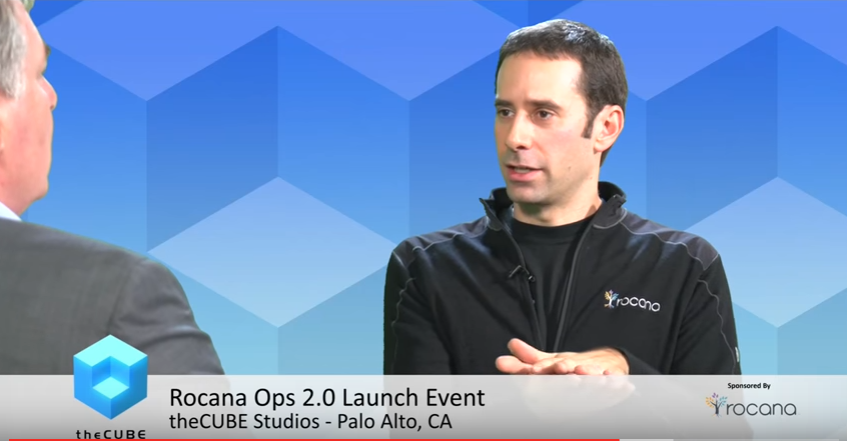 BIG DATA
BIG DATA
 BIG DATA
BIG DATA
 BIG DATA
BIG DATA
Why are companies trying to get the lead in digital innovation? Is it because the software tools that facilitate it are so neat? Or because the tech media makes the subject sound so fascinating? No, the answer is simply because customers are demanding a streamlined digital experience, and if businesses don’t deliver it, they will lose money to competitors who do.
Rocana Inc. CEO Omer Trajman recently said any business that is not a monopoly should understand customers aren’t very interested in whose fault it is when something goes wrong. They won’t put up with a glitchy webpage or mobile app if there are other businesses who have their digital act together.
Trajman told Peter Burris (@plburris), host of theCUBE, SiliconANGLE Media’s mobile live streaming studio, that customers expect uniform interactions from businesses. He added that a lot of companies can’t deliver because siloed IT departments make it a “fire drill” every time there’s a snafu.
“Under the covers you have a bunch of different folks in operations — now largely IT operations, because everything’s digital — and they’re scrambling, right? ‘What happened? Where did it happen? Who has the data? Who kept track of it? Who’s fault was it?’ Lots of finger-pointing,” Trajman explained.
Trajman added that this is unfortunately the state of affairs for the majority of companies these days. He said that companies cannot afford to hold a tribunal to find out who dropped the ball each time something in operations fails. He suggested that companies implement efficient data “forensics” to find and fix errors instead of gathering in a circle of finger-pointing.
“Security I think is starting to get this, and operations is kind of falling suit behind them,” he said. “What’s the trail of evidence in the form of data and events that’s leading us to: ‘Oh yeah, this is where it started; this is the cascade?'”
Trajman went on to add: “It’s like a crime map. There was an incident, you’re doing forensics.” He added that Rocana 2.0 has condensed this process into easy-to-use software. “We’ve basically captured that experience in software in a way that you can do it at scale, Fortune 100 global scale, multi-data center, multi-cloud, as a drop-in product,” Trajman claimed.
Trajman likened an organization’s body of data to a human body. “If you had separate parts of the body each kind of reacting immediately to their own local sensory input, you would not be able to crawl,” he said. “You would not be able to walk and run of course.”
Rocana 2.0 endows disjointed datasets with a “central nervous system” so that IT Ops can coordinate them into steps, movements and motions, Trajman explained. He said that the “first responder” feature allows IT to look immediately at what just transpired in the data center.
“You can start introducing some of these agile IT technologies, the PaaS systems like Cloud Foundery, like private clouds, like OpenStack and public clouds to allow the business to move faster,” he said.
The data a business has potentially can tell them where they are headed before any other person or entity has a clue. Trajman said that the way a business uses data determines if they will ultimately crawl, walk or run to the profits up for grabs.
Using a simple example of point-of-sale systems, Trajman illustrated his point. “The crawl is, ‘Let’s just make sure that we resolve point-of-sale system issues before the store calls us up and says, ‘We’re out of service.'” The walk, he said, would be something like doing updates at low peak times or at night to prevent issues from occurring in the first place.
“The run is when I look at the flow of data from a particular store and I can compare it to what was happening a week ago, a month ago, a year ago and to what’s happening in the other stores,” he explained.
He said that the business might spot a lower number of open registers, which costs the business money. They can then take measures to fill more registers. “That’s a revenue opportunity right there, and you can start extending that to the mobile experience, the web experience,” he said.
Trajman went on to further explain: “IT has access to all of that data, and it sees it as it’s happening.” He added that is why melding IT, operations and data through a “central nervous system” is valuable.
Watch the full interview below:
THANK YOU